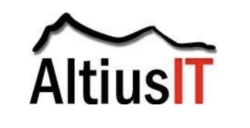Top 10 User Wi-Fi Safeguards
Your users are your first line of defense. They need to play an active role in helping to protect information systems. Listed below are the Top 10 steps they can take when using wireless networks.
- Signal strength. In general, the closer the user is to the access point, the stronger the signal and the faster the transfer rate. Rogue (unauthorized) access points may or may not be in the same facility as authorized devices. Users should know that signal strength alone, is not sufficient to determine authorized networks.
- Manual connection. Portable devices such as laptops and handhelds should be configured so that they do not automatically connect to wireless networks. A manual process helps ensure that the device connects to the appropriate wireless network.
- Legitimate network. Since Wi-Fi signals can travel a long distance, users should check with the management of the facility that provides the connectivity to ensure they are connecting to the appropriate network. Unauthorized "evil twin" networks can capture logon credentials and other sensitive information.
- Encryption. There are many different types of encryption methods used to secure wireless networks. Wired Equivalent Privacy (WEP) is the oldest and least preferred. Wi-Fi Protected Access (WPA) is newer and offers better protection. WPA2 is the newest and should be used if possible. Users should use Virtual Private Network (VPN) when connecting to corporate systems.
- Shoulder surfing. Ensure that others cannot obtain the user's ID and password as it is typed. In addition, sensitive information should not be able to be read on the screen by unauthorized personnel.
- Screen aware Users should look at the address bar URL. This will help protect against phishing attacks. Secure pages typically have a URL starting with https and include a secure page notification such as a lock.
- Firewalls. Firewalls help restrict traffic to and from the device. Users should ensure the firewall is turned on so it can actively protect the device.
- Patch management. Users should ensure that operating system and security protection software is patched and up-to-date. Ensure browsers and updates to third party software packages are applied in a timely manner. Critical updates should be tested and applied as soon as possible.
- Battery saver. Portable devices constantly search for available networks. Users can increase battery life by turning off Wi-Fi when it isn't needed. This also helps ensure that an intruder can't connect to the device.
- Incident management. Users should inform the appropriate personnel if they believe they logged into the wrong network, sensitive information such as their ID/password was compromised, their device was lost or stolen, etc.
Network security audits help organizations identify, manage, and reduce their risks related to mobile computing devices and communicating with wireless networks. Formal and documented policies ensure a top down approach to managing network security risks.

